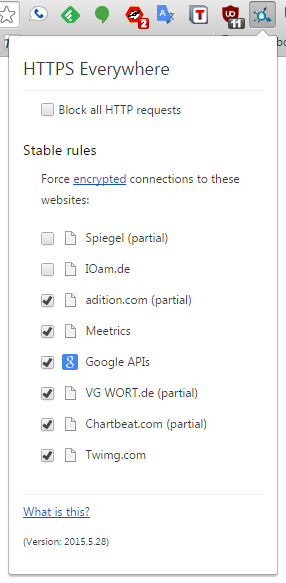WiMP sent me an email telling me that they are now called TIDAL, and as one does as a startup, they tried to win me back as a user by offering a three month free trial. I’m unhappy enough with the state of music streaming that I was going to give this a shot, but their campaign ultimately failed to win me over, for several reasons.
1. The link in the email goes to a registration page, with no mention of the email campaign. As a customer, I already feel like I’m in the wrong place, but as a developer, my guess is that this is just laziness. Someone probably added a parameter to the URL to track the campaign, but was sloppy on copy writing and custom code, especially in a foreign language (I browse in English).
2. I should be a registered user, because I had a WiMP account once that should have gotten transferred in the TIDAL rebranding. Since I used my Twitter account to register, I clicked the Twitter button on that page to gain access, but that ultimately results in an error message telling me that this account already exists. This is why you don’t recycle the general registration page for your win-back campaign.
3. I go through the email plus password process, where I have to enter my email twice, and then get an error message stating that “This email address is already registered”. Guessing that what it really wants to tell me is that my password did not match (that training as a developer comes in again), I try another password, and I am in. Or am I?
4. The next step immediately asks me for payment information. And this is where you’ve finally lost me. I’m here for a free trial, not to give somebody my credit card info, before I’ve even seen what the service is. If you want to run a free trial in this day and age, then you must not ask for credit card info until the trial is up, or users won’t even give your product a chance. I can’t believe I am seeing this.
5. Your only payment methods are VISA, Mastercard, Amex and Paypal? That’s bold. When I was at IMVU, we implemented several dozen payment options, and even in Norway I get a menu with at least three additional non-CC options. And while Paypal and VISA make up the the bulk of the payment, can you really say no to the additional revenue from SMS payments, bank transfers or prepaid cards?
6. Trying to send this rant to a human being at TIDAL leads me to their support page, and in roundabout steps to a Google Docs feedback form (more signs that there are no developers) which allows no more than 1000 characters. I understand that database storage space costs money, but WTF? This post is way above 2000 characters already. Are you sure that you
“appreciate you taking the time to share your feedback with us”? I’ll send them a link to this post instead, and hope that they go through the trouble of clicking through.
Overall, I suspect that this
campaign
has not been properly A/B tested, and that the TIDAL business development team is not aggressive enough about chasing new opportunities. Sure, all of this requires implementation resources, and developers are expensive, but your competitors are willing to make that investment, and if you continue to leave money and opportunities on the table, they will be happy to take up your slack.

